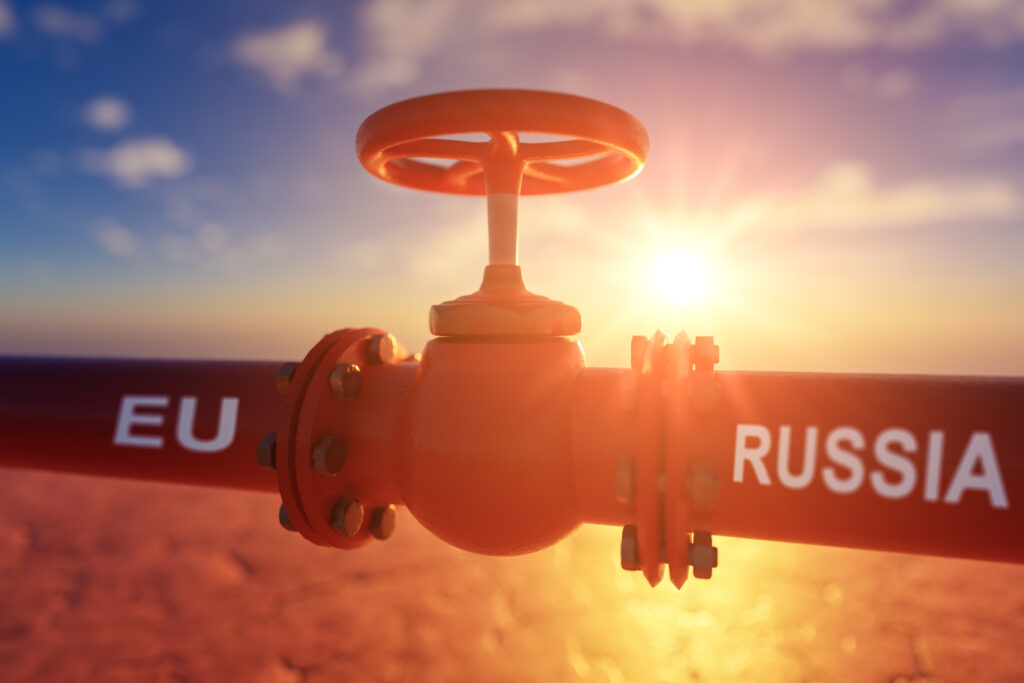
The EU’s proposed ban on Russian gas, examined in The EU Proposal to Ban Russian Gas Imports: Roadblock More Than Roadmap by the Oxford Institute for Energy Studies, outlines the European Commission’s plan to end Russian gas imports by 2027. However, the 2025 Proposal faces significant legal and practical hurdles, such as unclear rules for exiting contracts and stringent transparency requirements. Although overall gas supply disruptions appear manageable, some countries—like Hungary—remain at risk. The Proposal could raise costs and challenge EU cohesion, potentially acting more as a roadblock than an effective solution.
In May 2025, the European Commission (EC) released a Roadmap detailing measures to phase out all Russian pipeline gas and LNG imports to the EU by the end of 2027. On 17 June 2025, the EC introduced a Proposal for a Regulation to enact these measures into EU law. The Proposal includes two key prohibitions: one banning the import of Russian gas into the EU and another prohibiting long-term LNG terminal services for Russian customers. Both prohibitions take effect for new contracts (signed after the Proposal’s publication) from 1 January 2026, with transitional periods for existing contracts extending until 1 January 2028.
Our market modelling indicates that the proposed prohibitions would have a limited impact on imports into key Central European countries, albeit prices would be higher. However, if the route via Serbia is lost, Hungary could face a significant shortfall in gas supplies if there are constraints at any other cross-border point. According to this paper’s analysis, the Regulation will struggle to execute the complete phase-out of Russian gas for reasons largely related to the process and the rules that will govern it. These include the high-risk proposed route for buyers to stop imports under existing supply contracts and the absence of mitigation for those risks; stringent transparency and traceability requirements which place a high burden of proof on buyers and potentially restrict legitimate imports; and the likely disagreement between Member States and the EC over the development of National Diversification Plans (NDPs) that will be required to demonstrate national measures for the phase-out.
The Impact of the Import Ban on Gas Supply Contracts: Uncertain Force Majeure Route
The proposed import ban disincentivises new contracts and poses significant challenges for existing contracts for the supply of Russian gas and LNG. The EC provides no clear guidance on exit strategies for these contracts, beyond assuming the EU ban qualifies as a force majeure (FM) event, leaving buyers exposed to substantial legal and financial risks, including potential arbitration claims filed by the sellers of Russian gas. While the FM route is suggested by the EC, the likelihood of its success is highly case-specific and far from guaranteed.
Contrary to common belief, FM does not trigger immediate contract termination, and the Proposal does not clarify whether termination is required or if suspension of deliveries would suffice for compliance with the import ban. Additionally, the Proposal does not provide risk mitigation strategies to address buyers’ potential losses from FM cases. Even if the ban is recognized as an FM event, its suspension or subsequent lifting could still expose buyers to contractual liability at a later stage. Thus, FM proves to be a risky strategy for buyers filing notices to comply with the ban.
Transparency and Traceability Measures: A Greater Insight but to an Uncertain End
The Proposal introduced stringent transparency and traceability measures. It granted the EC significantly greater insight into all Russian gas supply contracts – irrespective of their duration, volume, and share in a Member State’s consumption – enabling access to their full texts (except price information). It also streamlined and expedited access to these contracts by obliging EU natural gas buyers to send them directly to the EC in a disaggregated form and without the need for case-by-case justification. LNG terminal service providers for Russian customers would also be required to provide information on contracted services, affected quantities, and contract duration, though these requirements appear less stringent than those for supply contracts.
Additionally, the Proposal requires importers to provide Customs Authorities with “appropriate evidence” to verify whether gas is of Russian origin and whether it qualifies for exceptions. Customs Authorities are given discretion to refuse entry if the evidence is deemed “not conclusive,” potentially restricting legitimate imports. Furthermore, any gas entering the EU through listed Interconnection Points (IPs) will be deemed Russian unless “unambiguous evidence” is provided that the gas transited Russia without originating there. These IPs include all current and former entry points for Russian gas, excluding those associated with the Ukrainian corridor—thus potentially allowing continued flows into the EU through Ukraine post-2027.
National Plans to Phase Out Russian Gas: The Choice Between Erasing and Reconciling Differences
The Proposal mandates Member States to develop National Diversification Plans (NDPs) by 1 March 2026, outlining steps to eliminate Russian gas imports. However, it is uncertain whether these NDPs will be consistent with the phase-out deadline or even implemented at all. Disagreements are expected between the EC and Member States, especially those heavily reliant on Russian gas via TurkStream or the Ukrainian corridor (before 2025). The Proposal lacks a mechanism for resolving such disputes.
Additionally, the absence of a requirement to quantitatively assess the phase-out’s impact on security of supply and the internal energy market (IEM) broadens the scope for disagreement and complicates alignment with existing national energy plans. As NDPs are solidarity measures, the EC must balance Member States’ interests with EU-wide goals, indicating that differences will need to be reconciled rather than erased.
The Impact of the Ban on the European Gas Market
In theory, the impact of the ban on LNG and pipeline gas flows appears manageable, with most affected EU countries expected to secure alternative supplies. Although some governments have raised security of supply concerns, modelling suggests there would be no major shortages—though prices would rise. For LNG, lost Russian supply to Northwest Europe would likely be replaced by U.S. LNG, while Russian LNG would shift to Asia. TTF prices are projected to rise by about 20 cents per MMBTU (average 2028–2035).
The loss of Russian pipeline gas via TurkStream could be offset by growing Black Sea production from Turkey and Romania. Prices would increase modestly—by 27 cents per MMBTU—while Austria, Slovakia, and Hungary would see average price rises of 35 cents per MMBTU. If gas flows between Serbia and Hungary are cut, Hungary may still secure alternatives via Austria, Slovakia, and especially Neptun Deep gas from Romania. However, Hungary remains most exposed to supply disruptions, which could lead to significant shortages.
Conclusions
The Proposal is the EC’s most decisive step yet to phase out Russian gas, but its effectiveness is constrained by legal, political, and logistical challenges. While it increases regulatory pressure and transparency, the Proposal does not ensure that imports under existing contracts will cease by the deadline. It places heavy compliance burdens on importers, risks regulatory overreach, and may inadvertently block legitimate gas flows—especially affecting Central and Southeastern Europe.
The lack of a dispute resolution mechanism for conflicts over NDPs further complicates implementation, while political will among Member States to enforce or comply with the ban remains uncertain. The EC may hesitate to act against non-compliant states, as seen in its reluctance to pursue infringement proceedings.
Ultimately, the Proposal risks becoming more of a roadblock than a roadmap. By pushing to eliminate remaining Russian gas, the EC could weaken the legal and commercial footing of EU gas importers, raise costs, and strain energy solidarity, with limited impact on volumes but a clear effect on prices—especially in the most vulnerable regions.
Read the full report here.



